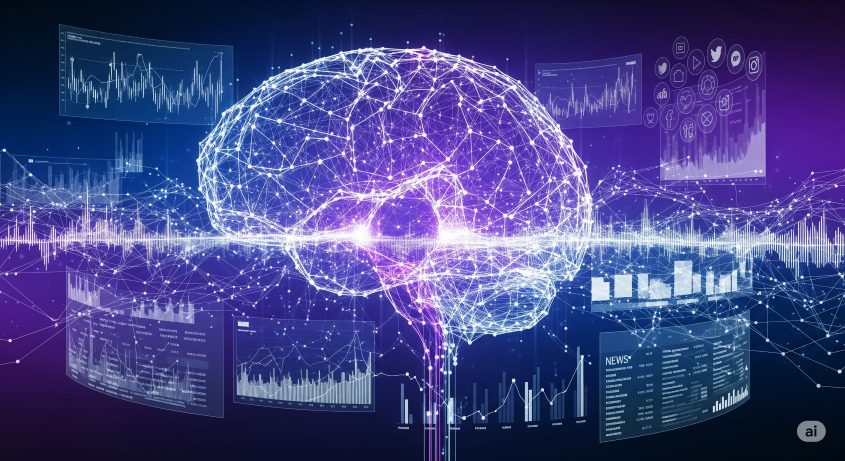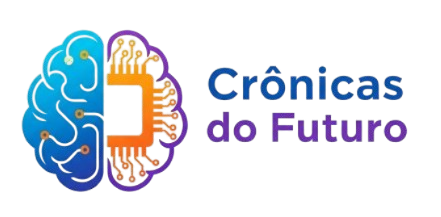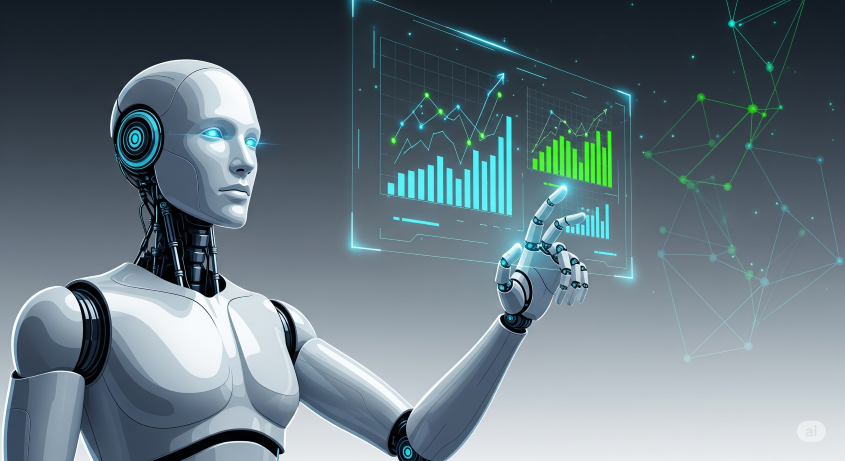
Have you ever imagined having an investment analyst who never sleeps, can read every finance book in the world in seconds, and analyzes millions of news articles simultaneously? It sounds like science fiction, but this is exactly how Artificial Intelligence (AI) is revolutionizing the stock market.
For an outsider, the idea of an AI “thinking” to pick stocks can seem like a complex and intimidating black box. But the truth is, the concept behind it is more intuitive than you might think.
This guide is made for beginners. We’re going to demystify the process, using simple analogies to explain how AI can process a humanly impossible amount of information to find the best investment opportunities, long before most people can.
AI’s Superpower: Massive Data Analysis
The key differentiator for Artificial Intelligence is its ability to analyze a colossal amount of data in real-time. While a human analyst, no matter how brilliant, can only follow a limited number of companies and news stories, AI can monitor the entire global market.
Think of AI as the world’s greatest detective. It doesn’t just look at the stock price; it investigates a universe of digital clues.
- Fundamental Analysis: AI can “read” and interpret thousands of financial statements, earnings reports, and investor presentations in seconds, assessing a company’s financial health.
- Sentiment Analysis: It monitors social media like X (formerly Twitter), news portals, and forums to understand public “sentiment” toward a company. A study from Indiana University found that Twitter sentiment analysis could predict the stock market’s direction with up to 87% accuracy.
- Alternative Data: AI goes beyond the obvious. It can analyze satellite imagery to count cars in mall parking lots (indicating sales volume) or monitor the number of job openings posted by a company (indicating growth).
How Does AI “Learn”? Understanding Machine Learning
When we say AI “thinks,” we are actually talking about Machine Learning. This is the technology that allows the system to learn from data without being explicitly programmed for every task.
### What Is Machine Learning, in plain English?
Imagine you want to teach a child the difference between an apple and an orange. You don’t describe all the rules (“an apple is red, round…”). You simply show them hundreds of pictures of apples and oranges, saying, “this is an apple,” “this is an orange.” Over time, the child learns to identify the patterns on their own.
Machine Learning works the same way:
- We Feed the Algorithm: Developers “feed” the AI with decades of historical stock market data.
- Pattern Identification: The AI analyzes this data and begins to identify complex patterns that correlate with a stock’s rise or fall. For example, it might discover that, historically, when Company X increases its R&D spending and Company Y launches a competing product, Company X’s stock tends to rise 5% within 3 months.
- Prediction: Based on these learned patterns, the AI makes predictions about future stock behavior when it finds similar situations in current data.
AI doesn’t have “intuition.” It has the statistical power to find correlations that the human eye simply cannot see.
AI in Action: A Simplified Case Study
Let’s imagine a practical scenario for a stock like “Apple” (AAPL).
| Data Source | Human Analysis (Limited) | AI Analysis (Massive) |
| Quarterly Report | Reads the main report, focusing on profit and debt. | Reads the entire report, including footnotes, and cross-references it with the last 20 reports. |
| News | Reads headlines from major newspapers about iPhone sales. | Reads every news story about supply chains, geopolitical tensions, and tech regulations in 5 languages. |
| Social Sentiment | Sees a few posts about the company on X (Twitter). | Analyzes 500,000 posts per hour, measuring public sentiment (positive, negative, neutral). |
| Alternative Data | Not applicable. | Analyzes app store download data in real-time to predict service revenue. |
Exportar para as Planilhas
Based on this massive analysis, the AI generates a “score” or a probability, indicating whether it’s a good time to buy, sell, or hold the stock.
Conclusion: A Tool, Not a Crystal Ball
It’s crucial to understand that AI for picking stocks is a tool of probability, not a crystal ball. It dramatically increases analytical capability, but the financial market is still influenced by unpredictable events.
The future of investing is not about replacing the human analyst, but about empowering them. The combination of AI’s analytical power with human wisdom and context is what will lead to the best decisions. Understanding how AI “thinks” is the first step to using this revolution to your advantage.
If you found this guide useful, leave a comment with your main question about investing and AI! And don’t forget to subscribe to Crônicas do Futuro to keep demystifying the technology that is shaping our world.



